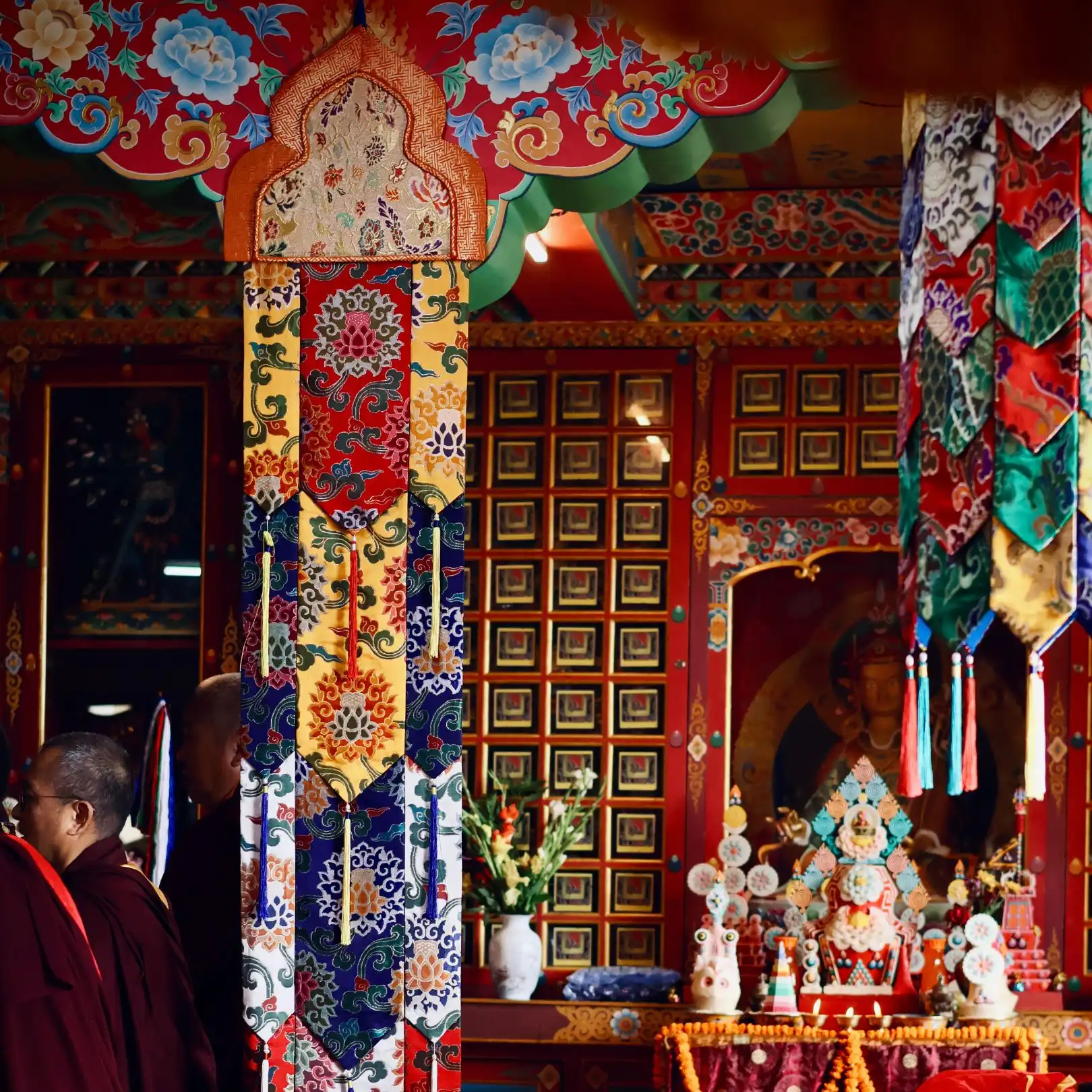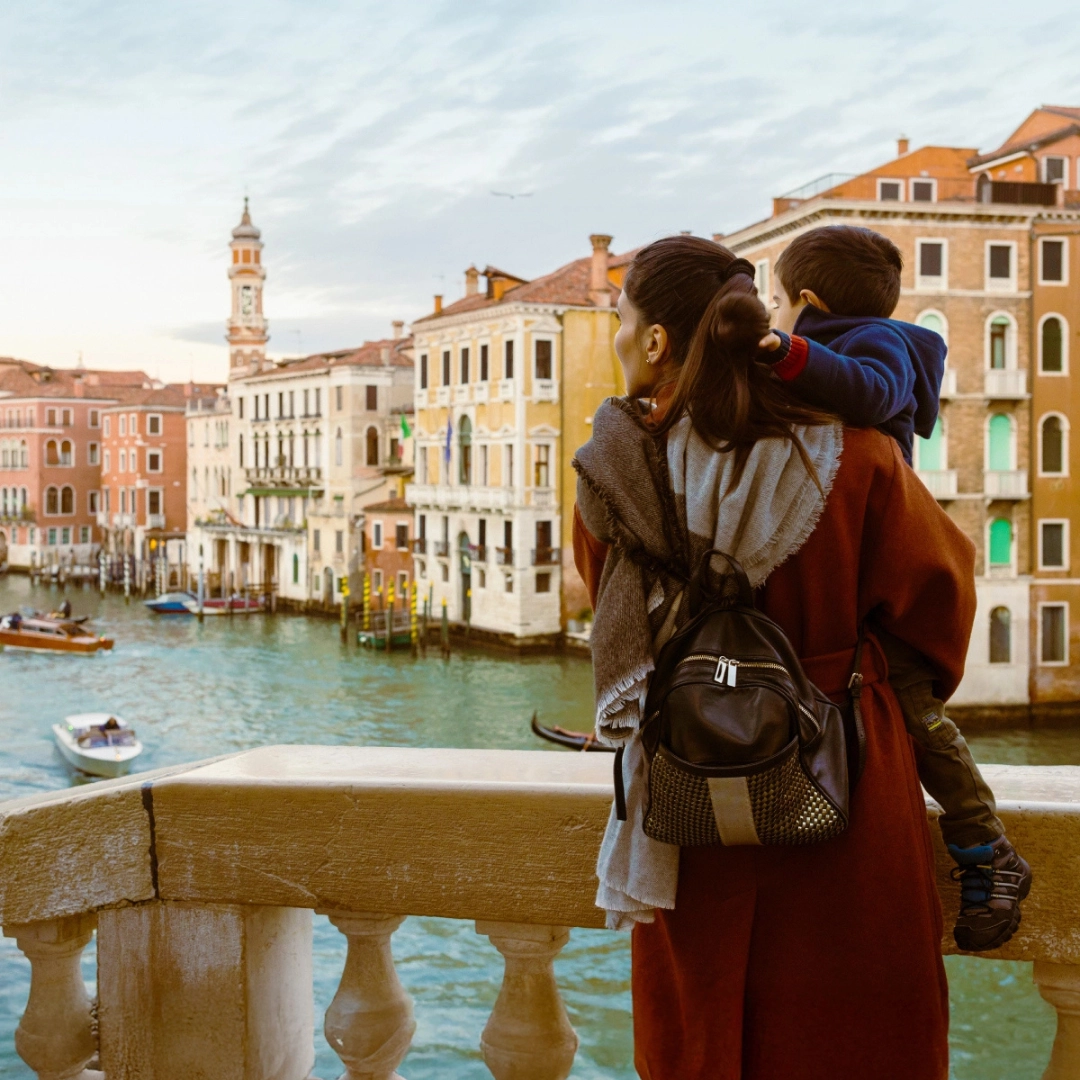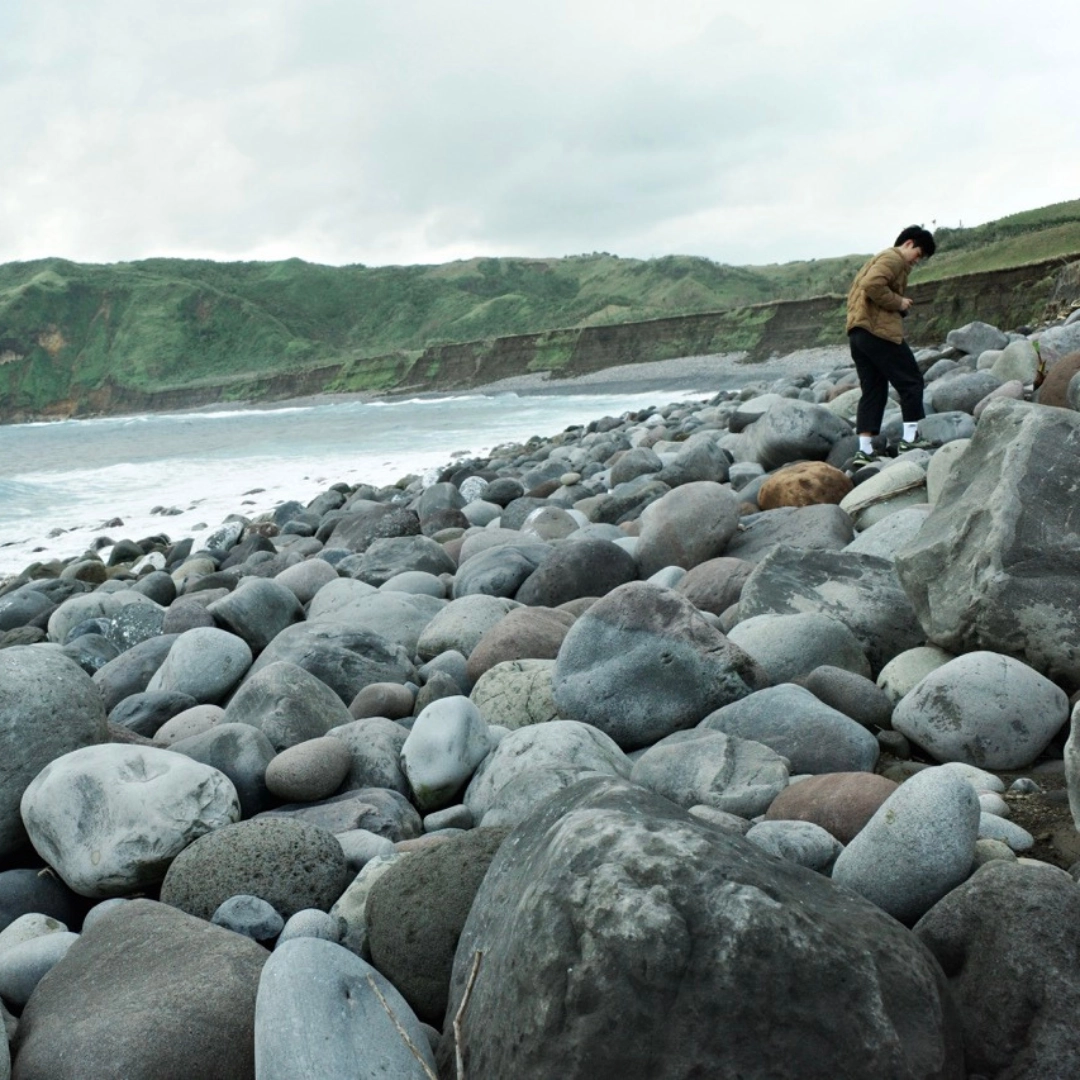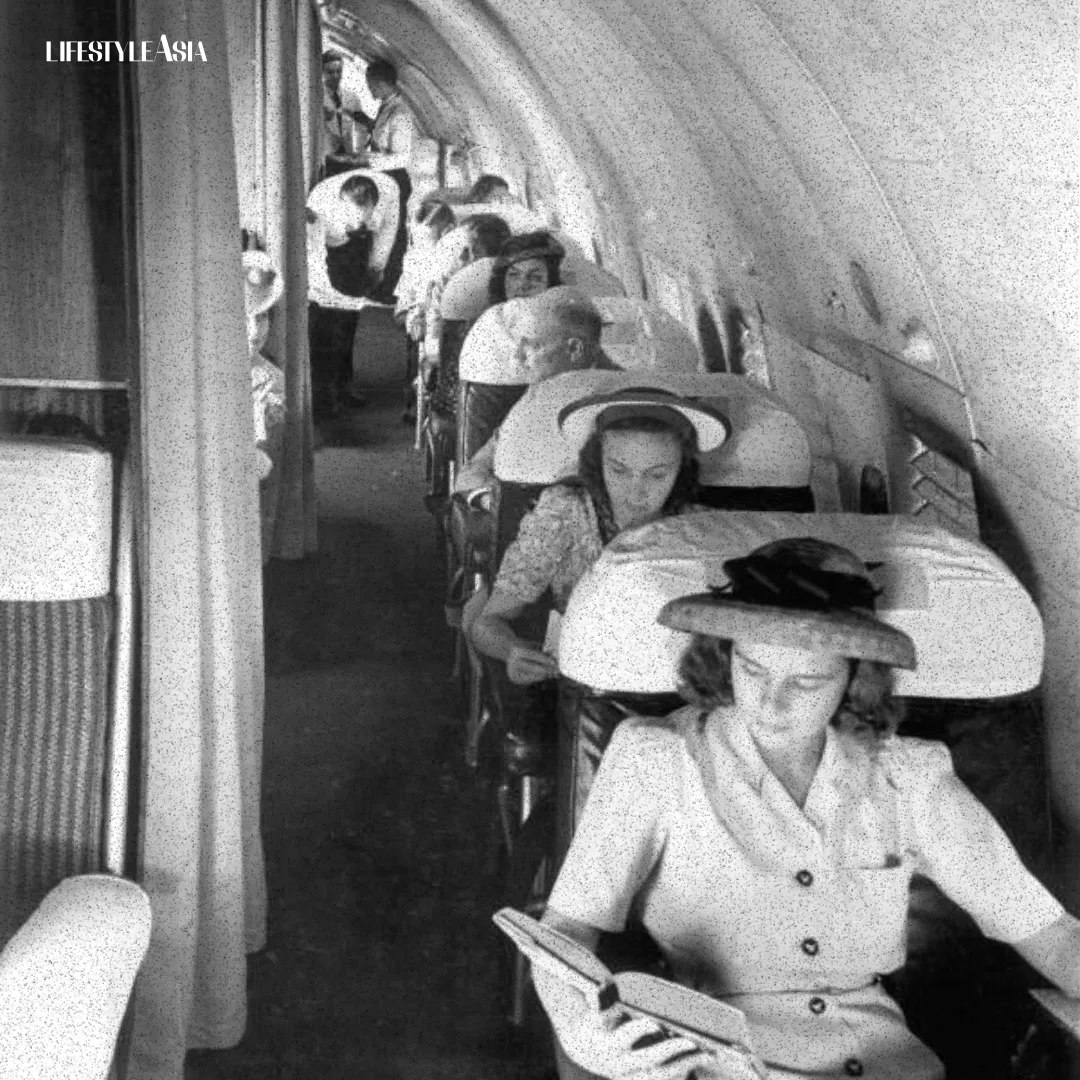In Sikkim, India, a writer undergoes a quiet transformation while trying to capture the lives of the monks and the invisible architecture of faith inside a hidden Himalayan sanctuary.
The monastery bells cut through the predawn darkness at six o’clock, as they had for centuries, signaling the beginning of prayer. I lay in my bed at Nedo Chedu Chukhorling Monastery, listening to the metallic reverberations bounce off the valley walls, and wondered at the strange magnetism that had drawn our family to this remote corner of Sikkim, a province tucked away in the far northeastern corner of India.
This was a religious pilgrimage for my family. From when I was born, my parents practiced Buddhism under the guidance of Venerable Lama Choyeng and His Eminence Nedo Rinpoche, who had established the Nedo Foundation in the Philippines. For as long as I can remember, I had grown up in the shadow of their devotion, participating in rituals I only half understood, and carrying philosophies as a sort of family inheritance.
For the most part, I had merely been a passenger in their spiritual journey. As I grew older and closer to spirituality, I looked forward to this trip as an opportunity I had never quite grasped: the chance to cultivate my relationship with these teachings, and to move from passive participation to active inquiry into Buddhism, particularly Vajrayana.
READ ALSO: How Queer Filipino Photographer Gab Mejia Sees The World And Listens
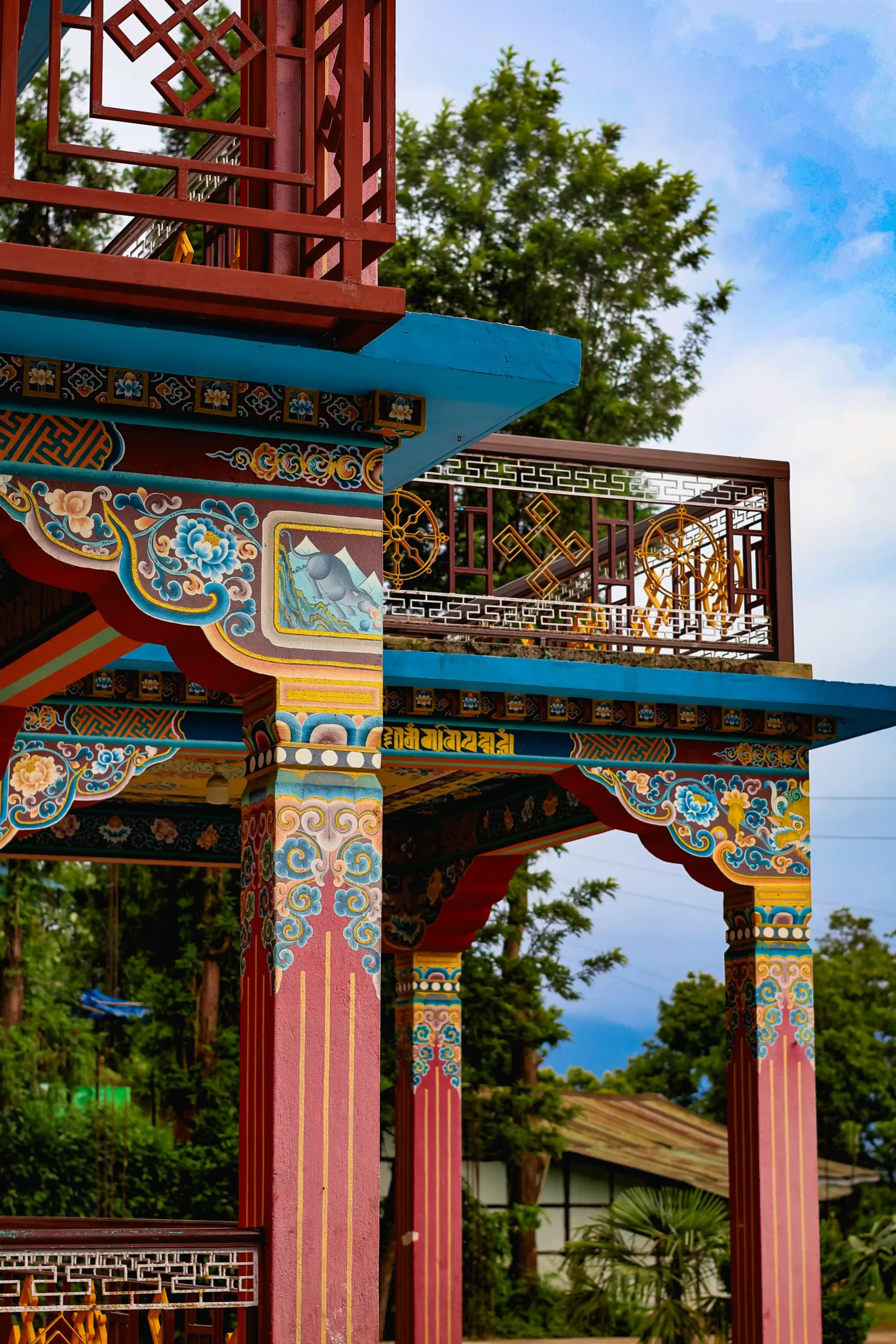
The Physics Of Transformation
Vajrayana, the “Diamond Vehicle” of Buddhism practiced in Sikkim, originated from pre-existing Tantric traditions that emerged within Hinduism during the first millennium CE, with Buddhist tantric traditions arising in the 7th century CE and rapidly spreading across Southeast, East, and Central Asia. What distinguishes Vajrayana from other Buddhist schools is its emphasis on transformation rather than transcendence—the idea that samsara, the cycle of suffering, can be transmuted into enlightenment through skillful means. This distinction would prove crucial to my understanding of what unfolded during our stay.
I am a lover of music and have always been fascinated by sounds, so I was deeply charmed by being in the prayer hall every morning. The sounds were unmissable: the gongs, chants, and trumpets all created vibrations that seemed to emanate from the earth itself. Each chime and syllable carried what the tradition calls “energetic precision,” the idea that certain sounds possess transformative power beyond their literal meaning.
While I watched the monks during their morning practice, I began to understand that they were not merely praying but actively reshaping their consciousness through visualization techniques that had been refined over centuries.
For the first time, I saw the practices I had grown up with not as cultural artifacts, but as technologies—precise methods for working with the mind. The mantras my parents chanted at home, the visualization exercises that had seemed abstract and foreign, were slowly revealing their function as tools for transformation.

Rumtek And Wishes
The revelation came during our visit to Rumtek, an ancient but politically disputed temple. The entry to Rumtek felt like another crossing—in reality, it was. Soldiers checked our passports, and separate paperwork was required to get in. As you enter the temple, you can feel how old the place is, in an ancient, old-world kind of way. As cheesy as it sounds, it felt like the temple of Aang from Avatar: The Last Airbender. You could feel the lightness of the air and, at the same time, the richness and depth of history.
We toured the school where monks study scrolls of ancient scripture, and on the other side, a group of monks were learning how to paint ancient symbols freehand. The monks were serious but friendly. It’s amusing that even all the way up here, you can still see monks with modern cell phones, which stand as a stark contrast to the traditional architecture and clothing that surrounded them.
READ ALSO: Would You Fuji Rock Again..?: 3 Days In A Japanese Music Festival
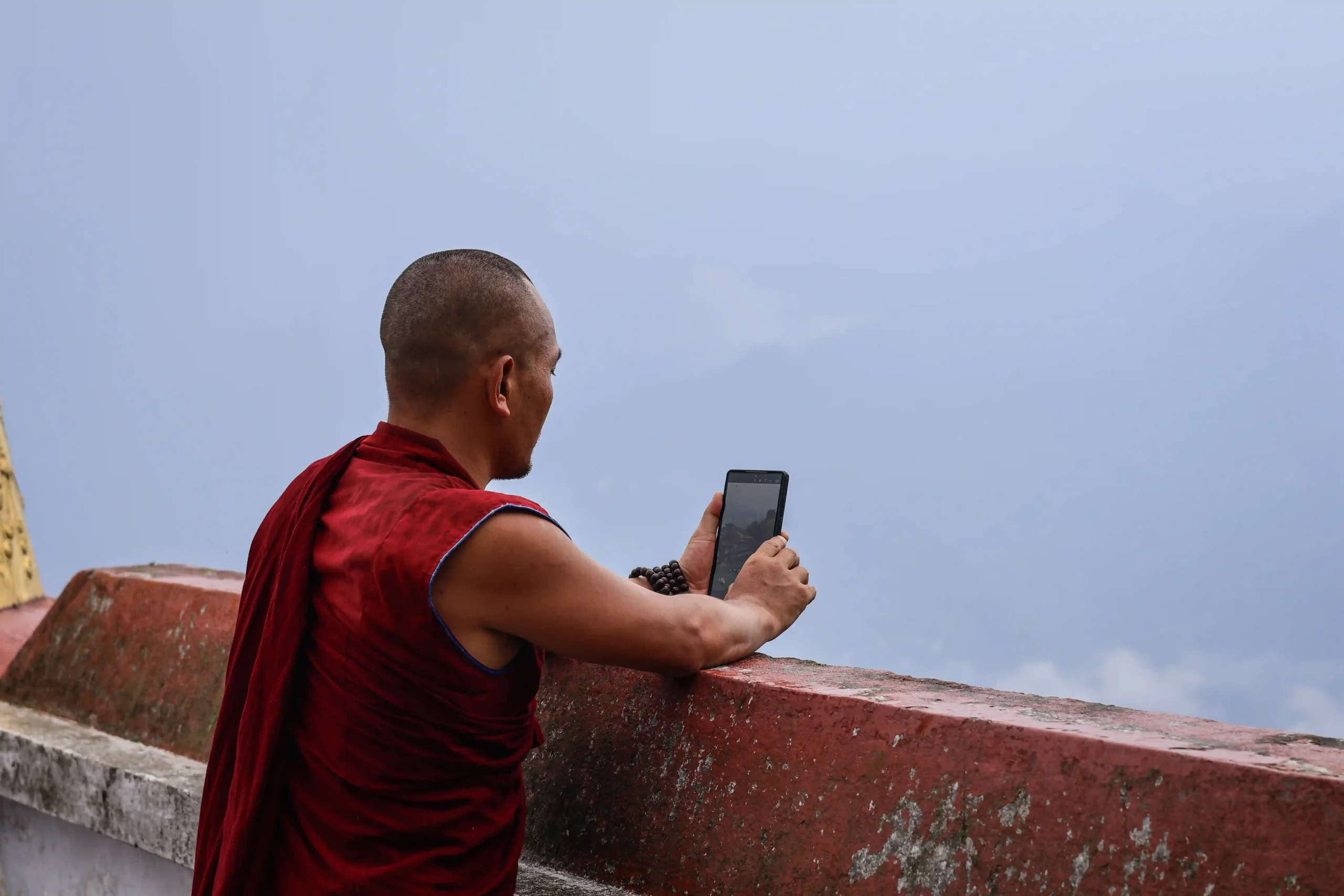
As we entered a special prayer room, I stood before the altar, surrounded by the familiar scents of incense and butter lamps, and realized I had no idea what to wish for. The question that seemed so simple—what do you want?—exposed the fundamental uncertainty that had been lurking beneath my inherited practice.
In the face of infinite possibilities, I found myself paralyzed by choice. The awareness of mortality and the infinite possibility became my clarifying principle: When I die, what will I be most proud of? What makes my heart truly sing? What will I regret the least? And having only this one precious life to live, what do I want to accomplish? What legacy do I want to leave? What good could I bring to the world?
The questions arrived without easy answers, but their presence felt like progress. For years, I had been living in the margins of my own life, following scripts written by others, participating in practices whose meaning I had never fully claimed. Now, in this temple where strangers had been asking similar questions for centuries, I felt the stirring of something I had never experienced before: both a hunger and an awakening.


A Trip To Gangtok Market
One moment stands out: a car ride to Gangtok’s bustling market with a Lama who shared his story. In Vajrayana Buddhism, monks are granted a year outside temple life to decide if they’ll commit to becoming a Lama—a realized practitioner. Our Lama explained why he chose the temple’s simplicity over the outside world. “There’s too much unnecessary tension out there,” he said, describing stresses that cloud happiness. His words, though familiar in their wisdom, hit differently in that moment. Cliches like “Don’t sweat the small stuff” suddenly felt profound and sank deep into my mind.
When I thought about his response and looked at his view, his life in the temple was straightforward: prayer, food, friends, and daily chores. Then I thought of all the things in my life in Manila that made life feel like a heavy sigh on repeat—did I really need to stress out about one email? When we zoom out, most of these concerns in our modern city’s existence do not really matter in the larger scheme of life. And to some extent, this realization made me question my participation in this tense urban cycle.
In that moment, I also began to reflect on the Buddhist concept of samsara not as an abstract concept but as a lived reality. The wheel of suffering isn’t metaphorical; it’s the observable pattern of how we create our own misery through attachment, how we chase solutions that generate new problems, and how we mistake the temporary for the permanent.

Momos With The Monks
The monastery meals were prepared by the monks, and it was mostly root vegetables, noodles, and rice mixed with home-grown butter, lard, broth, and spices. Tea was served every morning, and coffee too, as one young Lama was charmingly perfecting the art of the espresso.
Every monk had a task, and it all felt communal in a homey way. I became more grateful for my food as I knew it was prepared with earnest hospitality. My favorite meal was momos, large dumplings native to the Himalayas. I remember having one in Gangtok market, and the Lama was so disappointed and said, “I can make one better.” Immediately, he called his friends in the kitchen and asked them to prepare the filling and the wrapper, and by evening, we were served tasty chicken and vegetable momos. As they served the momos in trays, I grabbed the tongs to fill my plate with the dumplings and grabbed a dollop of the homemade blended spice paste that typically accompanied them. I took a smidge, and immediately my mouth was on fire. Himalayan spice was something else!
As I ate my meal on the couch, listening to the other visitors, I remember feeling calm and grounded in the presence of just being, and listening to other people without distraction.


It was also during these meals that I began to understand the Lama’s observation about “unnecessary tension.” The phrase had been working on me like a slow-acting medicine, and I found myself applying it to situations with increasing frequency. The conflict with a colleague that had consumed my thoughts? Would I even remember it in ten years?
These questions weren’t dismissive but diagnostic. They revealed the extent to which I had been swimming in other people’s suffering, trying to solve problems that weren’t mine to solve. Buddhism, I realized, had taught me more about boundaries than any psychology book ever could.
As the concept of samsara was crystallizing more in me, I began to reflect on my experiences and the stories that filled my days back home in Manila. I realized that a friend going through a breakup no longer requires me to dive into their emotional waters. I could offer support and a listening ear while understanding that their journey is their own, and that the lessons they need to learn could only be learned by them. I was beginning to understand that this wasn’t indifference but wisdom; true compassion sometimes means allowing people to experience their own consequences.
READ ALSO: Hong Kong Food Trip: 18 Restaurants In 4 Days
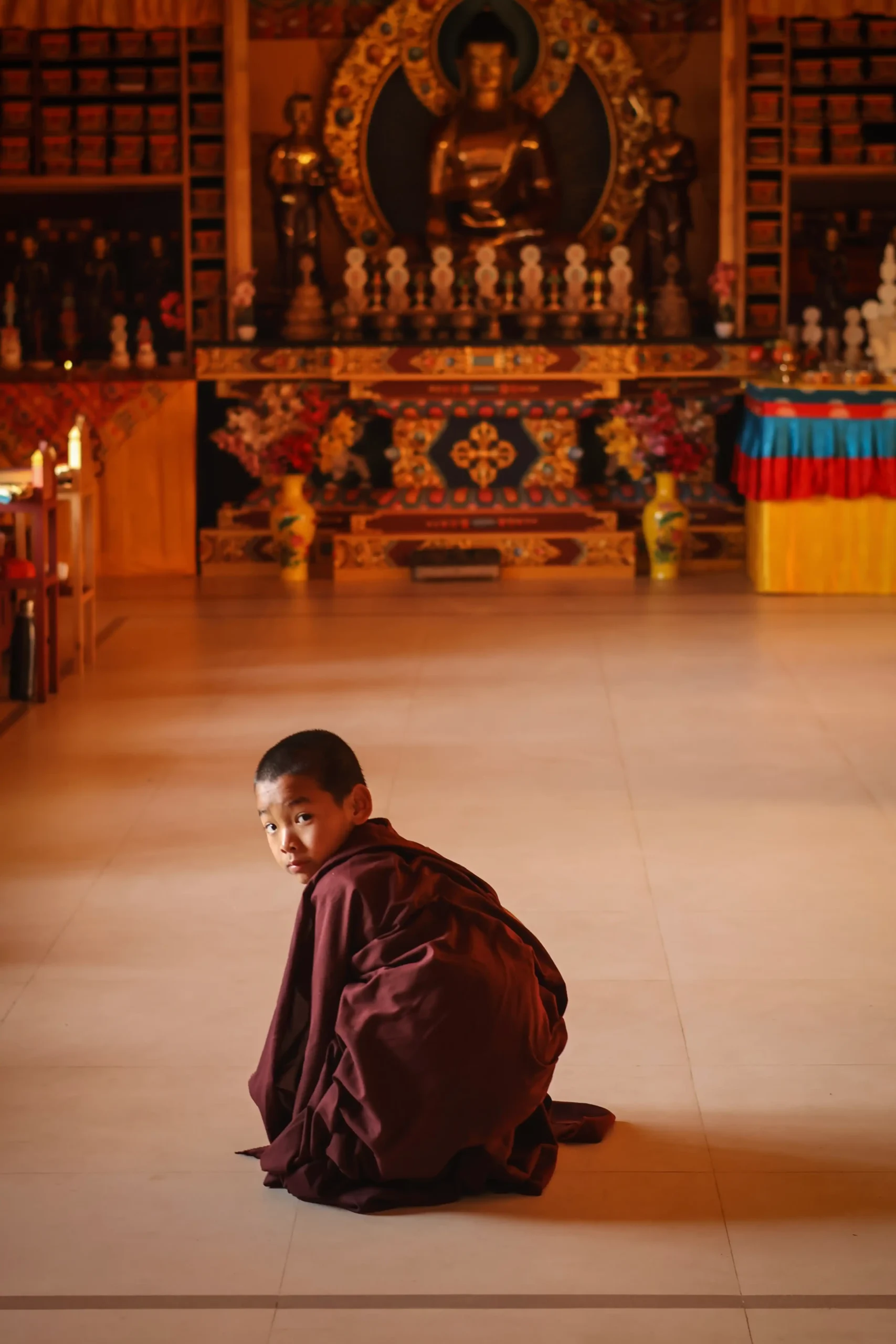
The Visible And The Invisible
The challenge of photographing Sikkim lay in capturing what couldn’t be seen. There is a certain quality of silence and sanctity in everyday objects that I wanted to capture. My camera became a tool for documenting the invisible architecture of faith: the way prayer flags created geometry against the sky, the patterns of shadow and light that fell across meditation halls, and the expressions on faces turned inward in contemplation.
The young monks presented a particular challenge. In my photographs, they appear caught between worlds—the discipline of monastic life and the natural exuberance of childhood. One image shows a boy monk sitting alone in the prayer hall, dwarfed by the ornate altar behind him, his posture perfectly upright yet somehow fragile. His presence spoke to the continuity of monastic practice across generations.

The venerable Lama Choyeng, celebrating his 90th birthday, appeared in my photographs as a figure from another century surrounded by children who would carry forward traditions older than any modern nation. His face, weathered by nine decades of the mountain’s climate and spiritual discipline, seemed to contain the entire history of the place. Meeting him felt like encountering a living bridge between the Buddhism I had inherited and the Buddhism I was finally choosing to explore.
In his presence, I found myself able to ask the questions I had carried for years. Not the superficial queries about ritual and doctrine, but the deeper ones about purpose and meaning. What did it mean to live a good life? How could one distinguish between genuine spiritual insight and mere emotional satisfaction? What was the relationship between personal practice and service to others?
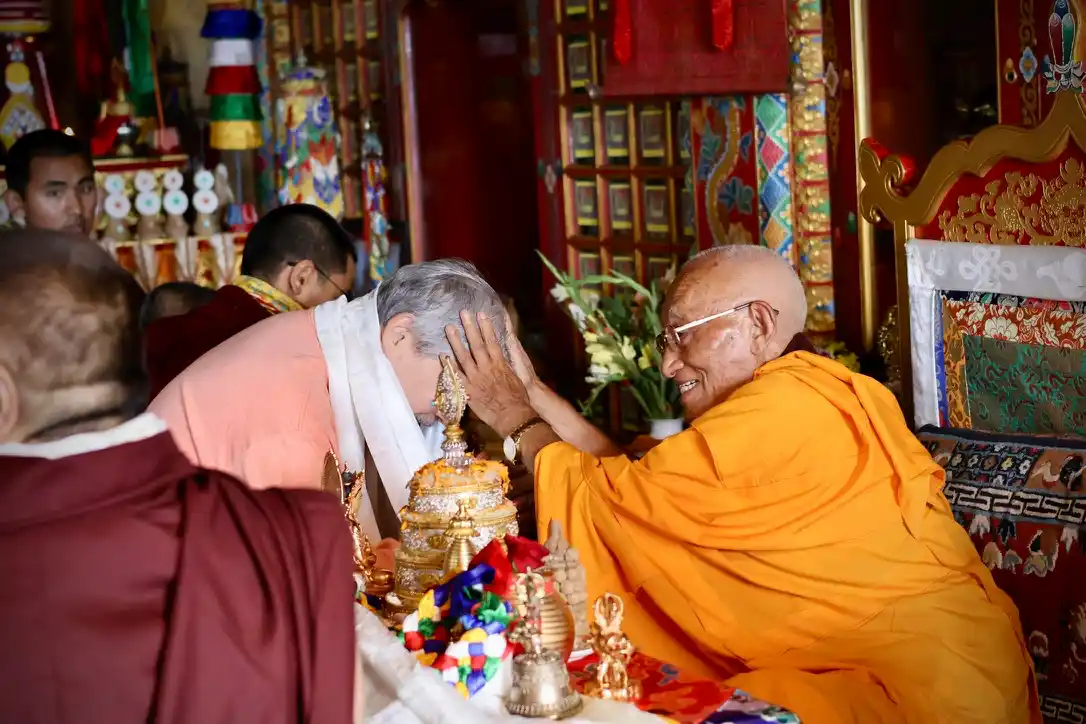
Lessons From Sikkin, India
As our time in Sikkim drew to a close, I realized that the real journey had been interior. The monastery’s radical simplicity had revealed, by contrast, the complexity I had been creating for myself in the name of progress. The Lama’s observation about “unnecessary tension” had worked its way into my consciousness like a slow-acting antidote to the poisons of modern life.
But more than that, I had begun to glimpse the outlines of what I wanted to live for. Not the grandiose ambitions of youth, but something more modest and more sustainable: the desire to bring clarity to confusion, to offer presence rather than solutions, to help others find their questions rather than imposing my answers. These weren’t small accomplishments but foundational ones; basic skills of conscious living that made all other contributions possible.
The Art Of Choosing
Back in Manila, I found myself applying the lessons more frequently. The colleague who seemed intent on creating drama at work? I no longer felt compelled to engage. The daily irritations that had once consumed my attention? I asked myself if they would matter in five years, and the answer was almost always no.
The deepest teaching of being in Sikkim wasn’t just philosophical but also practical: the recognition that happiness is a choice available in every moment. Not a choice dependent on circumstances—that would be just another form of attachment—but a choice that exists independent of external conditions. The monks I photographed weren’t happy because their lives were easy; they were happy because they had learned to choose happiness regardless of what arose.
This choice required constant practice. Getting caught up in stressful situations or friends’ difficulties no longer triggered my need to fix or rescue. I am now finding a way to continuously recognize that everyone must find their own way, including me, out of their own version of samsara.
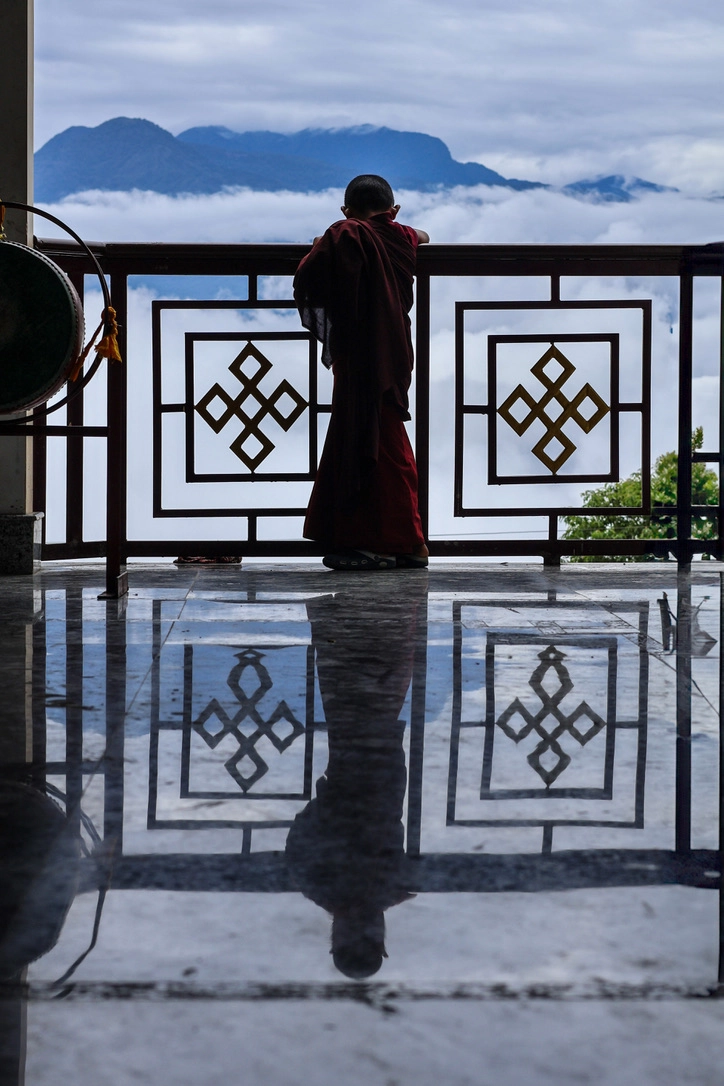
The Wheel That Liberates
The journey back to the world of airports and schedules felt dreadful, but the impact of that journey to Sikkim will linger: a recalibrated understanding of what makes a meaningful life.
Sikkim had revealed itself as more than a pilgrimage site—it was a mirror that reflected back my own capacity for choice and my hunger for purpose beyond the metrics of productivity and achievement. In a world that profits from anxiety, this former Buddhist kingdom offered something revolutionary: permission to be present, to find joy in the space between thoughts, to discover that meaning might be less about grand gestures and more about the quality of attention we bring to ordinary moments.
After that arduous journey to Sikkim, I now know that some truths, like some places, resist easy access. But once discovered, they transform not just how we see the world but how we choose to move through it. The journey to Sikkim was a pilgrimage to the source, but it turns out that the real destination was the recognition that the source had been inside me all along, waiting for the right questions to unlock its wisdom.
This article was originally published in our September 2025 Issue.
Photography by Lar Chua
